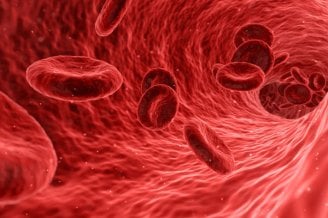
Eliquis (generic apixaban) is an anticoagulant or blood thinner medication that delays the clotting of blood. It is approved by the US FDA in 2014 to treat deep vein thrombosis and pulmonary embolism and prevent their recurrence. It is also used to reduce the risk of blood clots and stroke in people who have atrial fibrillation.
What are blood thinners?
Blood thinners are prescription medications that prevent the formation of blood clots. It is also helpful in preventing existing clots from getting larger. Blood clots are dangerous; they usually form in the arteries, veins, and heart that can lead to blockages, heart attack, and stroke. There are two types of blood thinner medications: anticoagulant and antiplatelet. Eliquis belong to the anticoagulant type, specifically direct oral anticoagulant class, or DOAC.
Since mid-1950s, warfarin has been the mainstay of anticoagulant therapies. It belongs to the class of vitamin K antagonists (VKA) that blocks the circulation of clotting factors by competing with vitamin K. Clotting factors are proteins that are essential in the blood clotting process. They are created in the liver with the help of vitamin K—commonly found in cauliflower, cabbage, and other green leafy vegetables.
While vitamin K antagonists are proven to be quite effective in preventing stroke, it has numerous drawbacks. Patients treated with warfarin and other coumarin derivatives require frequent lab monitoring and dose adjustments. Because of the complex management necessary for VKAs, the pharmaceutical industry has focused on developing oral anticoagulants that could provide predictable therapeutic effects with fewer dietary and drug interactions, and without the need for constant dose adjustment and routine lab monitoring. Such medications are now available in the form of direct oral anticoagulants, also referred to as novel oral anticoagulants (NOAC) or non-vitamin K antagonists.
Direct oral anticoagulants
Advantages
- Does not require routine lab monitoring
- Equally effective or superior to vitamin K agonists
- Does not require frequent dose adjustments
- Educating patients is less complex
- It has fewer drug/dietary interactions
- Lower incidence of major bleeding
Disadvantages
- More expensive than VKAs
- Cannot be reversed
- Patient compliance is a must
- Less understood drug interactions
- Nonadherence may occur due to lack of monitoring
Approved indications and dosing for Eliquis (Apixaban)
Indication |
Patient Characteristics |
Recommended Dosage |
Stroke prevention in non valvular atrial fibrillation (NVAF) |
Creatinine clearance ≥ 15ml/min or end stage renal disease (ESRD) on hemodialysis |
5mg oral tablet once daily |
|
If 2 or more of the following is present:
|
2.5mg oral tablet once daily |
Prevention of venous thromboembolism (VTE) after joint replacement surgery |
Creatinine clearance ≥ 15ml/min |
2.5mg oral tablet 12–24 hours after surgery |
Treatment of VTE |
Creatinine clearance ≥ 15ml/min |
10mg oral tablet twice daily for 7 days; 5mg twice daily thereafter |
Prevention of VTE recurrence |
Creatinine clearance ≥ 15ml/min |
2.5mg oral tablet twice daily after ≥ 6 months of taking the treatment dose |
How Eliquis works
Anticoagulants are called blood thinners, but they don’t actually thin your blood. These drugs prevent blood clotting by decreasing the blood’s ability to clot. The difference between anticoagulants and antiplatelets, like aspirin or clopidogrel, is that antiplatelets blocks the release of thromboxane—a chemical that signals other platelets to come together and form a clot. Platelets release thromboxane when you get a scratch or cut. Without thromboxane, no clot will form, and your wound will continue to bleed.
Instead of competing with Vitamin K, DOACs directly target the blood’s clotting factors (factors IIa and Xa). Apixaban or Eliquis works by binding to factor Xa, which is involved in the formation of clotting components fibrin and thrombin. By blocking the action of factor Xa, the blood will be less likely to form a clot.
In the ARISTOTLE (Apixaban for Reduction in Stroke and Other Thromboembolic Events in Atrial Fibrillation) trial, researchers have concluded that apixaban was superior to warfarin for preventing systemic embolism and stroke in patients with atrial fibrillation. Moreover, a lower mortality rate was observed among participants in the apixaban group over those who took warfarin. Another advantage of apixaban is its reversible inhibitory effect on factor Xa. To reverse or minimize the effects of apixaban, activated charcoal is administered if ingestion is within 2 hours. Another agent that can be used for its reversal is four-factor prothrombin complex concentrate (4F-PCC), which is also approved for warfarin reversal.
